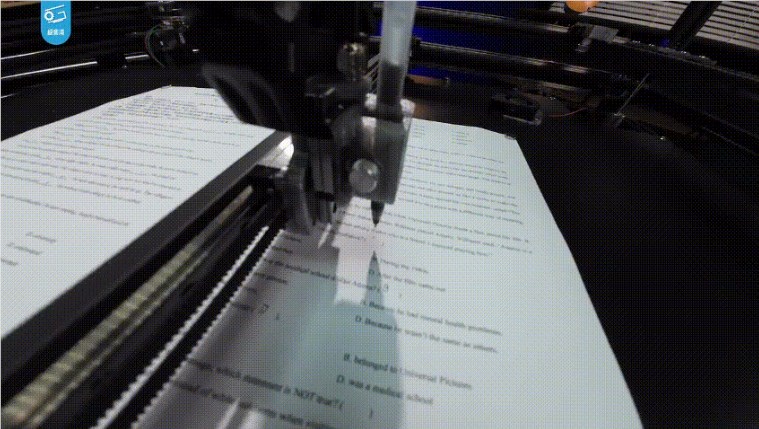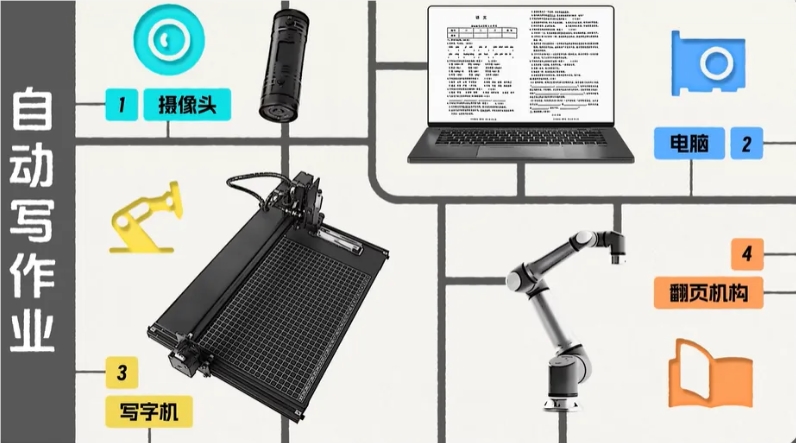The AI automatic homework robot "Daydream" released by Geek Bay, the owner of Bilibili UP, is popular all over the Internet. Its functions such as autonomous page turning, AI problem solving, and handwriting imitation are amazing. The number of views exceeded one million in just two days, triggering heated discussions among netizens and triggering thoughts on the nature of education and the application of technology. "Daydream" did not happen overnight. After months of research and development and iteration by the team, it finally achieved answers to questions in multiple disciplines, demonstrating the charm of technological innovation and the exploration of future education.
Has your childhood wish come true? Recently, Geek Bay, a well-known UP host at Bilibili, released a video showing the Daydream, an AI automatic homework writing robot carefully built by their team. It instantly set off the Internet, and the number of views exceeded 100 in just two days. Wan, once climbed to 15th place in the ranking list of station B.
This robot named Daydream is an artifact that countless students dream of. It can not only turn pages independently, but also automatically answer questions through a large AI model, and can even imitate human hand writing. What’s even more amazing is that it also carefully flattens the seams in the pages when turning pages. This almost humane design has amazed many netizens.

The birth of daydreaming did not happen overnight. The Geek Bay team spent several months undergoing an upgrade from version 1.0 to version 2.0. Initially, they tried to modify existing writing machines, but encountered a series of technical problems such as page turning stability. In the end, the team decided to design and build this intelligent writing robot from scratch.
In terms of hardware, version 2.0 adopts the CoreXY structure, which greatly improves the stability and work efficiency of the machine. In terms of software, advanced AI models such as LayoutLM and GPT-4 are used to significantly improve the accuracy of answers. The integration of these technologies enables Daydream to deal with various question types in Chinese, mathematics, English and other subjects, including multiple choice, fill-in-the-blank, reading comprehension and even writing.

Although there is still room for improvement in Daydream’s productivity—3 hours to complete a 44-page assignment—it certainly offers a new possibility for reducing students’ burden. However, this invention also prompted people to think deeply about the nature of education. Some netizens joked: You have done a good job, but a little trivia: most schools have already started. This not only speaks to the practicality of daydreaming, but also reflects some of the public’s doubts about education methods.
Whether it is an adult who has entered society or a student who is struggling in school, the appearance of daydreams evokes a certain resonance deep in people's hearts. It is not only a machine that can replace humans to complete homework, but also a vivid example of technology realizing childhood fantasies. This innovative invention demonstrates how technology changes our lives and brings new thinking directions to the field of education.
As AI technology continues to advance, smart devices like Daydream may enter our lives more and more. While they provide us with convenience, they also remind us that we need to rethink the nature of education and future learning methods. While appreciating this technological miracle, we also need to seriously consider how to find a balance between technological development and the original intention of education to ensure that technological progress truly serves education rather than becoming a tool to avoid learning.
The "Daydream" robot not only demonstrates the progress of science and technology, but also triggers our in-depth thinking about education and science and technology ethics. In the future, how to balance technological progress and the original intention of education will be an important issue worthy of continued discussion.